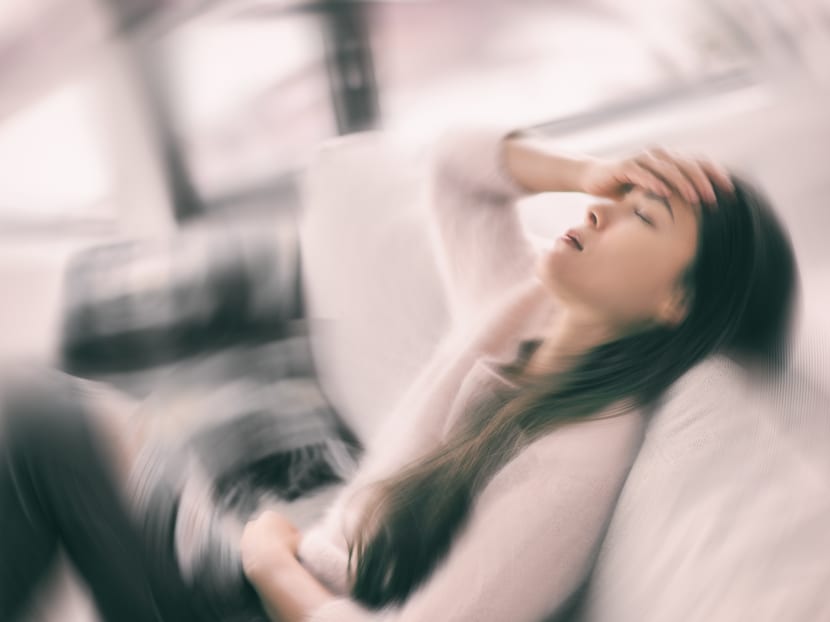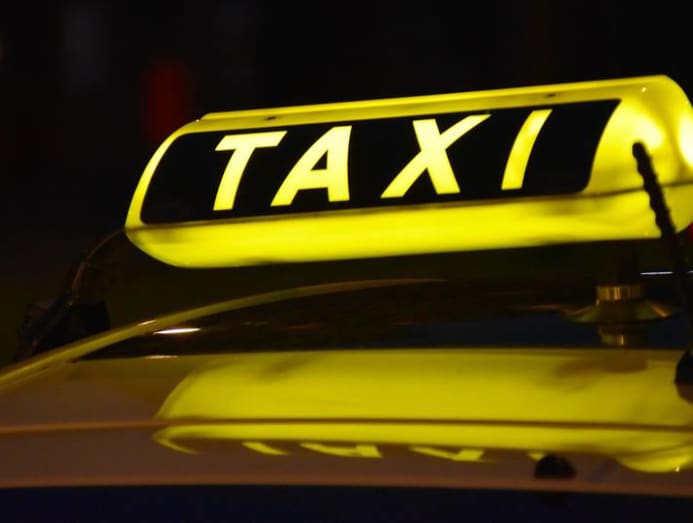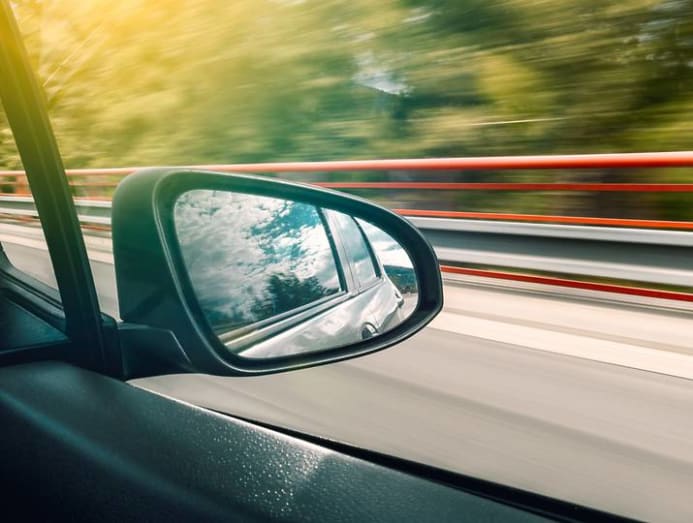Do you get dizzy on the bus or taxi ride to work? Here's how to feel better
Everyday scenarios and non-medicated ways to fend off the nausea and headache caused by motion sickness.

(Photo: iStock/Maridav)
One minute it’s a perfectly normal ride on the bus, MRT or in a taxi. The next minute, it feels like you’re on a boat on rough seas, feeling all giddy and nauseated.
That shortest of rides has turned into an express trip to hell, no thanks to motion sickness.
And it seems like certain people are more vulnerable than others. Although experts aren't certain about the exact cause, they have noticed a link to fluctuating hormonal levels.
For this reason, women, especially pregnant ones, are generally more susceptible, said Dr Edwin Chng, medical director at Parkway Shenton.
Furthermore, women are also more prone to migraines, which can also contribute to motion sickness.
“Some genetic variants have also been associated with increased susceptibility to motion sickness,” he said.
In fact, this predisposition is more marked in some ethnic groups than in others; one study published in 2002 found that individuals of Chinese or Japanese ancestry are significantly more vulnerable.
Age could be another factor, said Dr Jane Rosenman, a paediatrician at Mayo Clinic Children’s Center.
"It's most common among children ages two to 12, which probably has something to do with the fact that their brain is still developing," she said.
It’s compounded by the fact that kids are often preoccupied with books or screens while riding in the back.

The good news though, is that motion sickness generally gets better with age and people can grow out of it, said Dr Rosenman.
Of course, you can’t wait for that to happen because you’re feeling dizzy right now.
Here’s a look at common everyday scenarios where motion sickness might occur and how you can minimise the effects.
YOU’RE BUSY CHECKING THE PHONE IN THE TAXI
That queasy feeling is the result of the mixed signals that your brain and body receive.
“The brain is constantly receiving numerous inputs from the ears, eyes, skin, muscles, bones, and joints to estimate the motion and spatial orientation of the head,” explained Dr Chng.
Most of the time, these signals are congruent.
For instance, when you’re walking, your brain detects signals that you’re in motion, and the changing scenery around you matches that information.

But when you’re focusing on your smartphone in a moving vehicle, your brain registers that you’re moving but your eyes are saying, nope, you’re just sitting there, scrolling through your smartphone.
“These conflicting signals are what result in the symptoms of motion sickness,” he said.
Try this: Keep the signals consistent by looking out of the car window, so the moving sights match what your body is feeling. It is also a good idea to put down your smartphone.
But if you must reply Whatsapp messages, there’s a trick for iPhone and iPad users. Switch on the Reduce Motion function under Settings – General – Accessibility - Reduce Motion and voila, zoom and slide effects are now changed to the dissolve effect.
Wallpaper, apps, and alerts that move or shift slightly as you tilt your device are also disabled. For Android users, you might want to try these steps to disable animations on your phone.
Overloading your brain with signals can bring on motion sickness as well – just think back to the last 3D movie you saw.
Although your smartphone or tablet’s display isn’t anywhere close to an IMAX screen’s, reducing its frame rate of display can help. You’ll get visuals that are less motion dense, so your brain can process them better.
But be warned, reducing the frame rate of display will result in visuals that look less fluid and less real.
READ: How to avoid motion and altitude sickness on your holiday
THE DRIVER OR THE PASSENGER BEFORE YOU HAS BODY ODOUR
Body odour and other sources of pong (such as stale food smells, durian, sweat, urine and even disinfectant) detected in a vehicle’s interiors are some of the biggest turn-offs – and causes of nausea and headaches.
What’s worse, you’re forced to stay in the enclosed space for a period of time, and sometimes, cracking the window open doesn’t help much.
Try this: “Peppermint essential oil is your saviour, said Irene Cheng, product marketing and distributor education manager of Young Living Singapore.
“When applied topically, it provides a soothing and cooling sensation, and along with its invigorating and energising aroma, peppermint essential oil also helps to fight occasional tension.
"Apply it on the temples or place on the palms of the hands, cup over nose and breathe deeply.”
There are other essential oils that you can use that smell bright and clean, including citronella, lemongrass, rosemary, myrtle, lavender and tea tree.
Cheng suggested applying the oil using a roll-on applicator onto your chest or under your nose to freshen up.
If you don’t like to wear scents on your skin, you can try a diffuser locket. It lets you apply drops of essential oils to a fabric insert that you place inside the locket and wear on a necklace or bracelet.
YOU’RE SEATED ON A BACK-FACING SEAT INSIDE A BUS
It’s the same mismatched signals as when you’re using your phone. On back-facing seats on the bus, your eyes are seeing the scenery moving in reverse but your body feels that it’s moving forward with the bus.
And motion sickness may be worse on buses as they make more start-stop movements – the bigger and more frequent the movements, the worse the symptoms become.
Motion sickness may be less pronounced on the MRT as the scenery outside the train moves in accordance to what your body feels when you're seated.
But on occasion, when you feel nausea creeping up on you, it might help to get up and face the direction the MRT is travelling in.
Try this: Don’t opt for the bus's back-facing seat if you can. If it is the only seat available, here’s what you do: When turning your head to look at things, turn in the same direction as the bus is turning, according to a study published in Ergonomics in 2016.
Researchers found that passengers felt better when they do that and kept their eyes open. For this reason, avoid sudden or rapid head movements, especially those that involve tilting.
YOUR RIDE'S AIR-CONDITIONING ISN’T WORKING AND IT’S SUFFOCATING
Other than the incongruous signals that your body receives, poor ventilation can also produce motion sickness.
The smell of exhaust fume or smoke inside the taxi can exacerbate the symptoms.
Try this: Ask the driver to turn up the air-conditioner. And while you’re seeing to the temperature, turn the air-con vents towards your face for some direct cool air, according to the Mount Sinai Hospital website.

If the driver says it’s already as cold as it can get, crack open the window and try some diaphragmatic breathing at six breaths per minute.
In a study published in Aerospace Medicine and Human Performance in 2015, participants who did slow breathing while viewing a virtual simulation of a boat at rough seas reported feeling less motion sickness than those who breathed normally.
To help with the breathing, Cheng recommends applying eucalyptus essential oil’s refreshing and rejuvenating aroma under the nose or to the head and neck.
“It provides a refreshing scent in stuffy environments,” she said.





